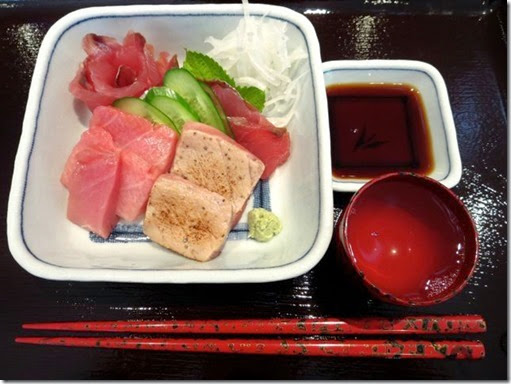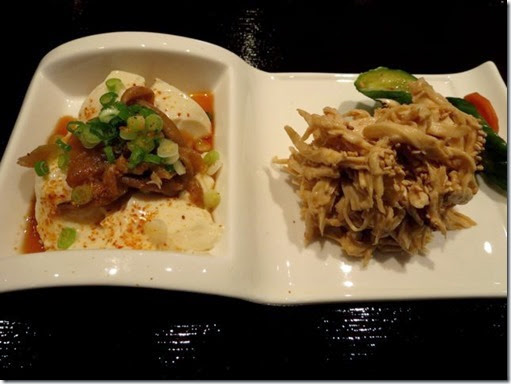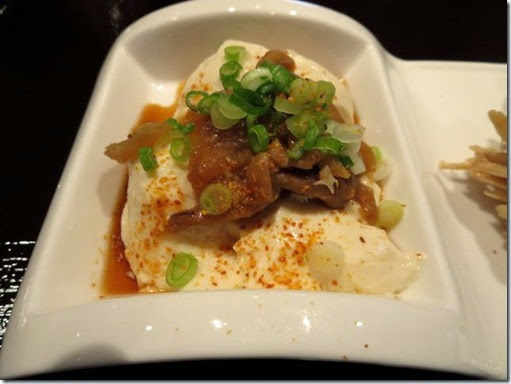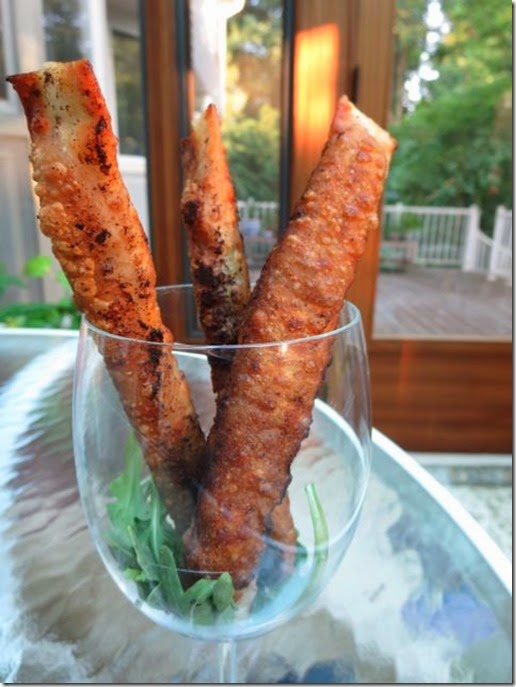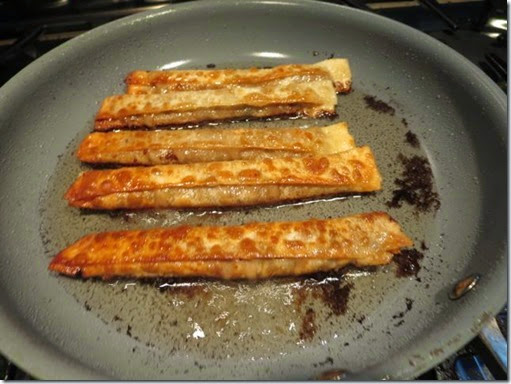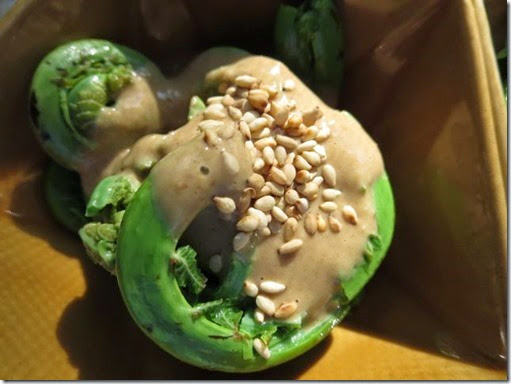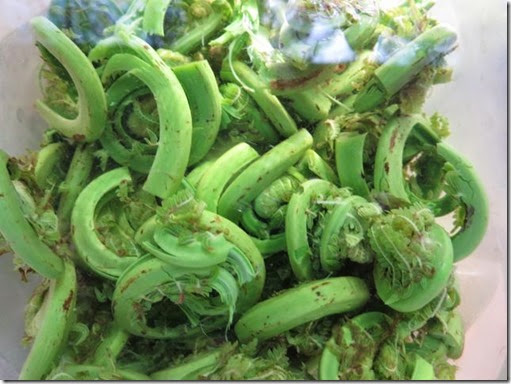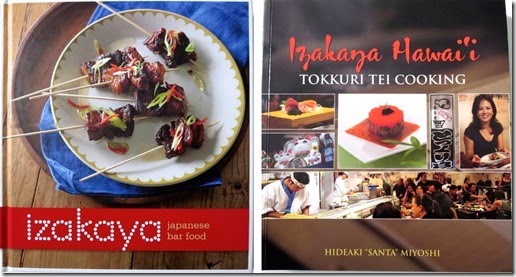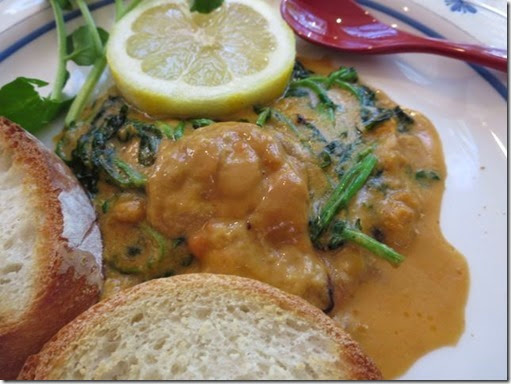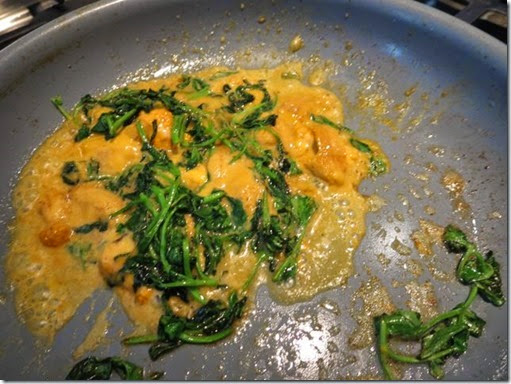This is our continuing exploration of sous vide cooking. We love salmon which I usually brown in a frying pan and finish in the oven. (I usually cook the skin separately to make it very crispy). But when I saw this
olive oil poached sous vide salmon recipe, I had to try it.
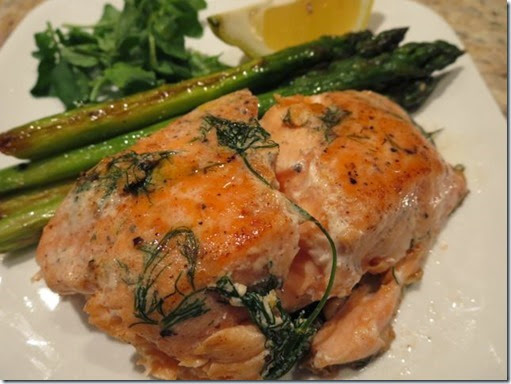
The above is the final product. I prepared and vacuum sealed the salmon over the weekend and cooked this on Monday after coming back from work. For fish, sous vide cooking does not take that long and having vacuum sealed packages ready makes it very easy even when you do not have much time.
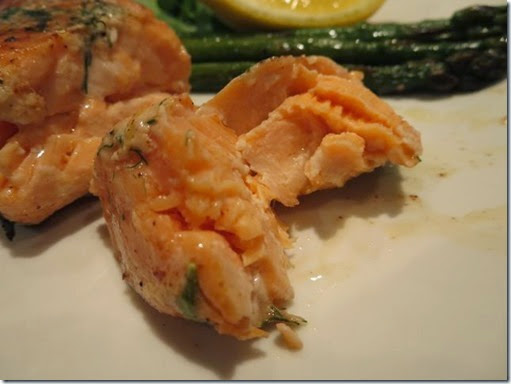
The salmon is fully cooked but very moist. This was cooked at 135F for 30 minutes.
I looked at several recipes and decided to take the best of
two recipes to come up with this cooking method. Unless you have a chamber type vacuum sealer, it is difficult or nearly impossible to vacuum seal items that include liquid. So, if you want to "oil poach", either you have to use "
water-replacing-air- method" or make the olive oil "solid" before vacuum sealing. I used the latter method by freezing the olive oil.
Olive oil: I first added 1/2 cup of light olive oil to the vacuum pouch and placed it (vertically) in the freezer. After a few hours, the olive oil was totally solid.
Salmon: One pound of salmon fillet, skin removed (I also removed the fatty belly portion for another dish.) I made two equal sized fillets and seasoned with salt and pepper, lemon zest (micro-grated) and chopped fresh dill (from our herb garden). I took out the vacuum pouch with solidified olive oil in the bottom and placed sprigs of fresh dill and the seasoned salmon inside with the frozen olive oil. I vacuum sealed (While it was being sealed one of the fillets rotated as you can see in the picture below.) I placed the package in the refrigerator.
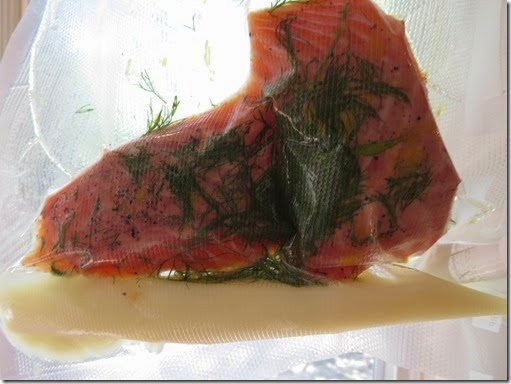 Sous Vide
Sous Vide: The temperature of sous vide was the next decision I had to make. One recipe called for 109F but, at this temperature no pasteurization would occur (It would be the equivalent of eating raw salmon or sashimi). Another recipe called for 116F for rare, 126F for medium rare and 140F for medium. I decided on 135F which is above the pasteurization temperature. I cooked it in my sous vide for 30 minutes (see below).
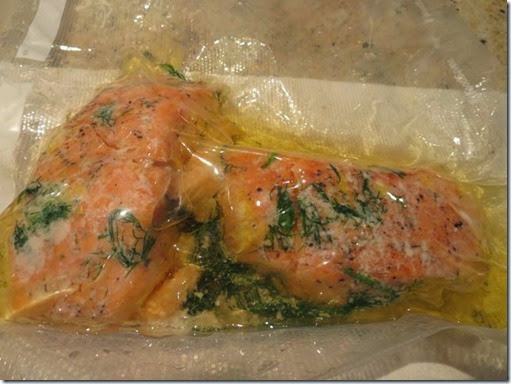
Both fillets were nicely contained within the olive oil accomplishing oil poaching. I took them out, blotted the moisture and excess oil from the surface and browned in a frying pan with butter on a medium flame, 30 seconds on each sides. The salmon was very soft and difficult to flip over.
We really liked the end result. The meat was opaque and fully cooked but very tender, moist and flavorful. It encapsulated all the goodness of the salmon and the lemon zest gave a nice lemony flavor. We really like the fact that I can prepared the pouch ahead of time and it is a cinch to just plunge it in the sous vide. I suppose I can prepare these vacuum sealed packages and freeze them. It may take only 5 additional minutes to thaw in the sous vide.
